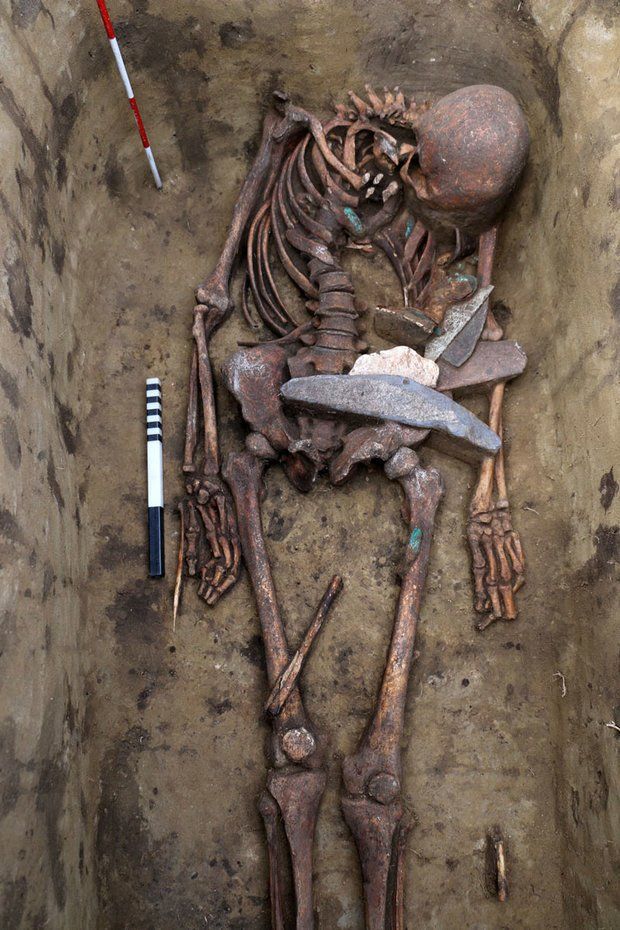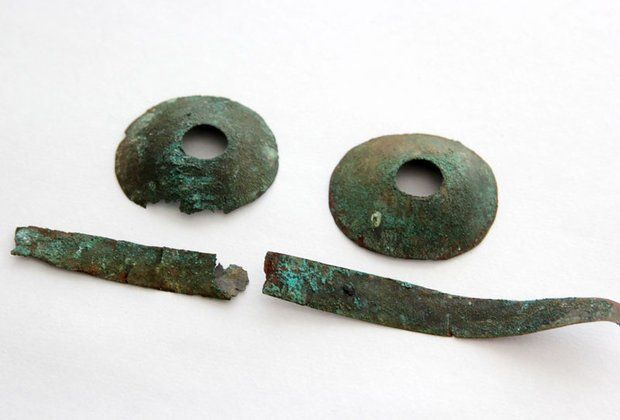Bronze Age ‘Birdman’ Had a Headdress Made of Dozens of Bird Beaks, Skulls
Researchers suspect that the unusual accessory served a protective ritual purpose
/https://tf-cmsv2-smithsonianmag-media.s3.amazonaws.com/filer/c8/03/c803f828-bf7f-4a8a-a5d9-a6ac013f19a0/shamans-graves.jpg)
A 5,000-year-old skeleton recently unearthed at the Ust-Tartas site in Siberia’s Novosibirsk region boasts a singular adornment: a headdress consisting of 30 to 50 bird skulls and beaks likely belonging to large shore species such as cranes and herons.
As Lidia Kobeleva, a researcher at Siberia’s Novosibirsk Institute of Archeology and Ethnography, explains in a video interview with the Siberian Times, the avian creatures’ remains were “laid as if they meant to cover the neck like a collar.” Although the unusual accessory doesn’t exactly qualify as armor, Kobeleva says it probably served a similarly protective ritual purpose.
The Siberian Times reports that the team suspects the deceased—nicknamed “the Birdman of Siberia”—was a priest or shaman. In a separate video posted by the Siberian Times, Kobeleva notes that it remains unclear how the headdress’ components were attached to each other or to a piece of fabric.
“Some of the beaks are packed separately from skulls, without a trace of head bones,” the archaeologist says. Kobeleva further points out that none of the bird beaks or skulls appear to bear the mounting holes one would need to easily weave them together.

The mysterious Birdman was a member of the Odinov culture, which dominated western Siberia during the early Bronze Age. Hunters who lived on an island surrounded by forest steppes, according to the Daily Mail’s Will Stewart and Ian Randall, the Odinov people derived their name from the Odino settlement in the basin of the nearby Ishim River and emerged out of the Eneolithic forest-steppe tradition prevalent in what is now modern-day Russia.
Prior to the Birdman’s discovery, archaeologists had excavated more than 30 burials at the Ust-Tartas site. But as Kobeleva tells the Siberian Times, none yielded finds as “impressive” as this latest one, which was unearthed alongside a second grave containing the remains of three individuals.
According to the Siberian Times, researchers identified two children aged 5 and 10 buried in the top layer of the grave. The skeleton of a man laid to rest with a “treasure trove of artifacts” was found beneath a wooden overlay supporting the youthful pair.

The most intriguing item in the hoard resembles a pair of spectacles. Made up of two bronze hemispheres and a connecting bridge, the mask-like object features what Live Science’s Mindy Weisberger describes as “circular eyeholes.” Experts believe it’s possible the gear served as part of a burial mask or head covering.
In addition to the potential glasses, researchers found five crescent-shaped polished stone pendants perhaps used for ceremonial purposes.
“Both men must have carried special roles in the society,” Kobeleva concludes. “I say so because we have been working on this site for a while and unearthed more than 30 burials. They all had interesting finds, but nothing ... was as impressive as discoveries in these two graves. We suppose both men were some kind of priests.”
/https://tf-cmsv2-smithsonianmag-media.s3.amazonaws.com/accounts/headshot/mellon.png)
/https://tf-cmsv2-smithsonianmag-media.s3.amazonaws.com/accounts/headshot/mellon.png)